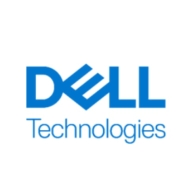

Dell NetWorker and Quest Rapid Recovery compete in the data protection solutions category. Quest Rapid Recovery appears to have the upper hand due to its extensive capabilities and user preferences for advanced functionalities.
Features: Dell NetWorker offers robust backup and recovery features, reliability, and integration with various environments. Quest Rapid Recovery provides near-instant recovery, superior replication, and seamless virtual standby capabilities.
Room for Improvement: Dell NetWorker users mention the need for improved simplicity in configuration and management. Quest Rapid Recovery receives feedback about its memory usage and the desire for a more streamlined update process.
Ease of Deployment and Customer Service: Dell NetWorker users find the deployment process straightforward but note occasional challenges requiring support. Customer service is responsive but could be more proactive. Quest Rapid Recovery benefits from simplified deployment and is generally appreciated for its effective support.
Pricing and ROI: Dell NetWorker is often perceived as cost-effective with a good return on investment. Quest Rapid Recovery has a higher initial setup cost, but its extensive feature set provides significant value, justifying the investment.


Built on a reputation of efficiency and reliability, thousands of customers trust Dell NetWorker to protect their data and applications across multiple environments, from core to edge to cloud.
Inherently flexible, NetWorker helps you deploy and leverage the data protection that fits your needs. NetWorker protects both physical and virtual environments, including VMware and Microsoft Hyper-V, as well as cloud workloads on AWS, Microsoft Azure and Google Cloud.
NetWorker is available as part of Dell Data Protection Suite, which offers comprehensive data protection software applications and tools. NetWorker is delivered as software and as a virtual edition.
Quest Rapid Recovery is a software solution that helps you recover your lost or deleted data quickly and easily. It works by scanning your hard drive for any traces of lost or deleted files, and then recovering them for you. You can use Quest Rapid Recovery to recover files from any type of storage device, including your computer's hard drive, an external hard drive, a USB flash drive, or even a memory card.
Quest Rapid Recovery is easy to use and comes with a user-friendly interface. It also has a wide range of features that make it one of the most powerful data recovery tools available on the market today. Whether you need to recover a single file or your entire system, Quest Rapid Recovery is flexible enough to get the job done.
The software offers simple solutions for backup and restoration. You can monitor and manage backup and recovery environments across multiple sites from one cloud-based management console. The software also tracks changed blocks to speed up backups and reduce storage usage. In addition, Quest Rapid Recovery deploys application-consistent backup with fast recovery for file servers and applications on both Microsoft Windows and Linux systems.
Quest Rapid Recovery Features
Quest Rapid Recovery Benefits
Offers the ability to easily back up data in the data center and in the cloud.
Allows users to return to work quickly and without any impact on their business.
Ensures you set recovery point objectives that are specific in order to reduce the risk of data loss.
Reduces the amount of storage space you need to back up your files and save money on backup costs.
Uses the cloud to back up, archive, and store your data in case of a disaster.
Functions as a single solution for both physical and virtual environments.
Reviews from Real Users
Quest Rapid Recovery stands out among its competitors for a number of reasons. Two major ones are its ability to greatly reduce backup and recovery time and its ability to mount an entire server.
PeerSpot users take note of the advantages of these features in their reviews. Glenn R., an ICT network manager at St Christopher's School Hove, writes, “We have reduced our backup and recovery time by between 80% and 90%. Built-in encryption helps to secure our data as it travels from our on-site server to our off-site backup server.”
Bill V., a systems and network administrator at a tech services company, notes, “Probably the point-in-time recovery is most valuable. The other piece that is really nice is that you can mount a whole server at any point in time. So, you can mount the server with all the drives to a Z drive or something like that. It will just mount it all up, and your data is accessible right there on one drive, which is nice."
We monitor all Backup and Recovery reviews to prevent fraudulent reviews and keep review quality high. We do not post reviews by company employees or direct competitors. We validate each review for authenticity via cross-reference with LinkedIn, and personal follow-up with the reviewer when necessary.